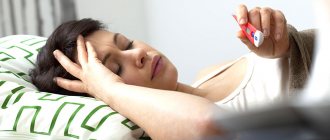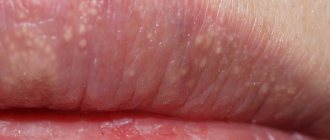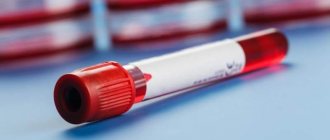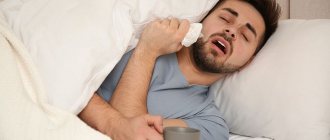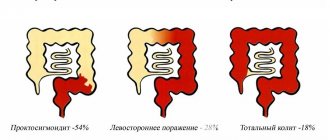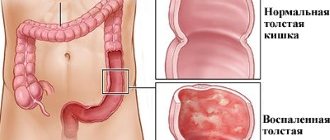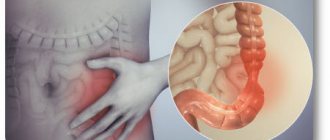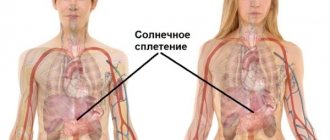Classification of tingling in the body as a symptom of disease
The feeling of goose bumps on any part of the skin and small prickles along them should not be left without due attention. They may indicate dormant diseases that are occurring or just emerging in the body, of which a person is completely unaware. Doctors call this manifestation of sensitivity paresthesia.
This happens mainly due to poor blood flow to certain areas. In some situations, before such manifestations there is a loss of sensitivity to irritants of the lower or upper extremities.
Along with this, the following changes are noticeable:
- sensitivity increases to even the most gentle touches;
- in some areas, on the contrary, it decreases;
- muscle weakness appears;
- joint mobility decreases;
- annoying itching and unpleasant burning sensation;
- severe pain reactions in any part of the place.
All these signs indicate a significant decrease in the sensitivity of nerve endings. However, even manifestations that do not cause discomfort should not be ignored.
This may be the main signal of the onset of such diseases:
- ischemia;
A stroke could be the cause of tingling throughout the body. - failures in the timely supply of blood to the brain;
- various injuries;
- sudden convulsive attacks;
- alcoholism;
- pathological disorders of the functioning of excretory organs;
- oncological formations;
- endocrine system;
- spine and joints;
- migraine;
- Raynaud's disease.
If the state of discomfort does not go away for a long period, then you need to contact your local doctor or neurologist to receive further instructions on diagnostics.
Possible causes of tingling in the body
Tingling all over the body like needles, the causes of which are accompanied by chronic diseases, can be characterized by:
- deprivation of the body’s ability to perceive external stimuli;
- painful attacks;
- muscle atrophy;
- debilitating itching.
Often a person experiences such negative reactions after nerves and blood vessels are pinched. This happens when you are in an uncomfortable body position for a long period of time. And when it changes, blood circulation throughout the body is normalized and discomfort disappears.
In older people, cells perform their purpose less well and, as a result, receive poor nutrition. Therefore, their paresthesia has chronic manifestations.
Other reasons include:
- skin diseases;
- long-term and voluminous physical exercises;
- fungal infection;
- mental disorders;
- insect bites;
- presence of helminths;
- allergic reactions to medications or cosmetics;
- influence of temperature changes.
A catastrophic lack of chemical elements necessary for the passage of vital processes in the body is manifested by the following symptoms.
On the torso
With spondylosis of the upper spine, discomfort occurs in the neck, back of the head and part of the back. This occurs due to the fusion of several adjacent vertebrae, which leads to compression of the nerve.
On the head
When cerebral blood circulation is disrupted, the head area suffers, nausea appears and the eyes become darker.
Possible causes of discomfort on the head may be:
- overwork – when vascular tone decreases, blood flows out of the brain;
- dystonia;
- eye strain – long periods of work at the computer, reading in poor lighting.
Migraine can also produce similar negative manifestations.
On the limbs
When an intervertebral hernia occurs, the nerve endings are pinched and frequent tingling occurs in the legs and back. Arthritis and gout due to compression of the nerve roots gives unpleasant sensations to the lower and upper extremities. Diabetic neuropathy causes tingling in the feet. Then they rise along the entire height of their legs and move to their hands.
All over the body
The feeling of minor needle pricks appears with neuroses and depressive states. Cardiovascular diseases are also accompanied by tingling sensations throughout the body. A common cause of paresthesia is disruption of the brain or spinal cord, or peripheral nerves.
It may also indicate the following violations:
- head injury;
- compression in the area of nerves;
- damage or pathology of the spinal cord;
- inflammatory processes or damage to the back muscles;
- stroke;
- diseases of the nervous system;
- poisoning with harmful substances;
- lack of B vitamins;
- protrusion or arthritis.
Prolonged stress or prolonged psychological tension are common causes.
Types and distinctive signs of symptoms
There are 2 types of paresthesia. The first is called transitory.
It occurs as a result:
- taking certain medications;
- migraine;
- mechanical compression of nerves and muscles.
The other is chronic. It appears in disorders affecting the central nervous system. This may be vascular damage due to various types of infections or inflammation.
Stitching pains
Chronic paresthesia causes stabbing pain. When such troubles affect the lower limbs, it complicates the process of walking. Such painful manifestations anywhere in the body cause great discomfort and cause nervous irritation.
If they do not leave a person for more than 3 months, it is necessary to contact a medical institution to obtain specialist advice.
Itching
Itching appears when the nervous system is damaged along any part of the path. It does not arise on its own. It is accompanied by other symptoms (pain, tingling).
Burning
A burning sensation in the body may appear due to the following diseases:
- vegetative-vascular dystonia;
- stroke;
- neuralgia;
- dermatomyositis.
In humans, such unpleasant feelings can also appear when the endocrine system is disrupted.
I have a stomachache. Colitis
The formation of a painful focus does not occur in the internal organ, but in the muscle fibers that surround it. This feature explains the different etiologies of colic. Stitching pain in the abdomen can be a symptom of a variety of diseases (not necessarily the digestive system). The organs located in the abdominal cavity have a similar structure. When their tissues or mucous membranes are damaged, a reaction occurs, accompanied by pain. Only a doctor can determine its exact cause based on a complete examination of the patient.
Diagnosis of symptoms: hardware and laboratory methods
Tingling all over the body, like needles, the causes of which can be found out from a neurologist, can be treated after undergoing an appropriate examination. A visit to the doctor should not be delayed if the discomfort is concentrated in one area or does not go away for a long time. And with movement and muscle load, it intensifies.
In more complex cases, the following symptoms may appear:
- dizziness;
- the appearance of dark spots in the eyes;
- nausea;
- involuntary convulsive muscle contraction.
Diagnostics begins with a blood test.
Having deciphered its result, the doctor may prescribe the following examinations:
- X-ray;
- Vascular ultrasound;
- electroneuromyography - the method allows you to find out the degree of signal transmission along the nerve;
- magnetic resonance or computed tomography of all parts of the spine or brain;
- ECG of the heart;
- Electrical myogram – muscle activity is checked.
In some cases it is prescribed:
- sampling of nerves or skin for research;
- cerebrospinal fluid analysis.
This will help identify antibodies associated with peripheral neuropathy. After receiving the examination results, the doctor conducts an examination. During a conversation with the patient, he finds out the date of appearance of the first signs, the frequency of manifestations of unpleasant sensations, and analyzes the person’s lifestyle.
During communication, the doctor checks the sensitivity of the skin and carefully examines the damaged areas. At the same time, he pays attention to the color of the skin, hair loss, and the degree of sensitivity in the extremities. A specialist such as a surgeon, neurologist or cardiologist prescribes a course of therapy.
Proper nutrition or diet therapy
Tingling sensations all over the body, like needles, can be treated comprehensively. Knowing the reason for their appearance, they select a set of medications and perform a massage. However, a balanced diet also plays an important role. A lack of vitamin B12 leads to such health problems. If it is not restored, then a positive result in treatment may not be achieved.
We must remember that such discomfort can occur as a consequence of having some kind of disease. Therefore, it is important to conduct a diagnosis and, depending on the result, create a diet. It may change due to existing illness.
Permitted and prohibited products
The menu of a person suffering from unpleasant symptoms should contain foods that contain the necessary vitamin B.
It is found in sufficient quantities in:
- beef and chicken liver;
- yogurt;
- lean pork;
- dairy products;
- lamb;
- sire tofu;
- grain products;
- eggs;
- fish of different varieties (carp, mackerel, perch);
- rabbit and poultry meat;
- beef.
If the patient has diabetes, then the product must be selected taking into account this disease. Eliminate baked goods and cereals from your diet. You need to eat less beets and potatoes. In this case, berries and fruits are undesirable. Bananas, grapes, and cheese can increase blood glucose.
It is advisable to avoid drinking alcohol and limit the presence of spicy and spicy foods on the menu, as they aggravate the development of tingling sensation. Jerusalem artichoke has a good effect on the body; it has a beneficial effect on nerves and blood vessels.
Menu for the week
The table shows an approximate selection of dishes for the week:
| Day of the week | Eating in order | Menu |
| First | 1 | Two soft-boiled eggs, dried fruit tea with crackers |
| 2 | Banana | |
| 3 | Vegetable soup, stewed liver, tea | |
| 4 | Berry-fruit jelly | |
| 5 | Potatoes with fish | |
| Second | 1 | Oatmeal, tea |
| 2 | Kissel, cookies | |
| 3 | Buckwheat soup, fish cutlets, compote | |
| 4 | Jelly | |
| 5 | Vegetable stew with meat | |
| Third | 1 | Cheesecakes, cocoa |
| 2 | Avocado | |
| 3 | Lenten soup, chicken with vegetables, dried bread, herbal tea | |
| 4 | Apple, nuts | |
| 5 | Oatmeal porridge, walnuts, stewed liver, tea | |
| Fourth | 1 | Steamed omelette, dried fruit compote |
| 2 | Fruit soufflé | |
| 3 | Rice soup, salmon and vegetable casserole, tea | |
| 4 | Compote, cookies | |
| 5 | Pilaf, compote, bread | |
| Fifth | 1 | Cottage cheese and berries casserole, tea |
| 2 | Banana | |
| 3 | Soup, barley porridge, boiled liver, compote, bread | |
| 4 | Yogurt | |
| 5 | Boiled vegetables, fish cutlet, tea | |
| Sixth | 1 | Cottage cheese casserole, low-fat yogurt |
| 2 | Banana | |
| 3 | Cereal soup, baked mackerel | |
| 4 | Dried fruits | |
| 5 | Baked fish with vegetables, tea | |
| Seventh | 1 | Rice pudding, compote |
| 2 | Berry mix with yogurt | |
| 3 | Soup, chicken cutlets, potatoes, tea | |
| 4 | Cookies, tea | |
| 5 | Vegetable stew, boiled fish, bread, cocoa |
Prevention
Doctors at the 5th Hospital will not only select the optimal diagnostic and treatment option for each patient, but will also advise on how to prevent relapses.
Diet occupies a special place among measures to prevent intestinal and stomach diseases. It is important to learn to maintain balance in nutrition. You should not overeat; you should chew food carefully and slowly. Water, tea or mate should be consumed in sufficient quantities; coffee is not recommended in this case. At the same time, when choosing a diet, experienced doctors take into account all factors:
- functional state of the intestines, liver, pancreas
- secretory function of the stomach,
- intestinal motility,
- the presence of other concomitant diseases.
In addition to your diet, it is important to reconsider how you store and process food. Do not leave food open in the sun. Avoid damp food storage areas. Otherwise, they may begin to mold and rot. Avoid contact between raw foods and cooked foods.
Exercise therapy is also of great importance in the complex of preventive measures. Instructors-methodologists select their own loads and exercises for each patient.
Drug therapy
Physiotherapeutic treatment has a good effect. It is aimed at eliminating unpleasant sensations.
These include:
- administering medication using current (electrophoresis);
- healing by applying mud to sore spots;
- acupuncture;
- diadynamic currents;
- magnetotherapy.
Massage is an excellent way to relieve the patient's condition.
What causes of tingling in the body are an indication for taking medications?
Tingling throughout the body like needles (the causes are determined during diagnosis) in cases of impaired conduction through the nerves is treated with medications.
For this purpose the following drugs are prescribed:
- B vitamins - it is more advisable to use them in the form of injections, this is necessary for their rapid entry into the bloodstream;
- antiplatelet agents that promote better blood circulation in the body;
- antioxidants that improve metabolic processes in tissues.
It is strictly prohibited to start taking pharmaceutical drugs on your own. Only after being prescribed by a qualified doctor should a course of treatment be carried out.
He may prescribe the following medications:
- antihistamines - if there is irritating itching, severe burning;
- local products with a cooling effect;
- sedatives - for nervous disorders?
First aid for stabbing abdominal pain
During an attack, you should not eat food. Drinking water is allowed, but only in minimal quantities. If the cause of colic is not known, then an ambulance must be called. Before doctors arrive, you should not self-medicate. There are several ways to alleviate the patient's condition. For regular colic, you should know the algorithm of actions (including relatives).
First aid:
to eliminate pain, you can use No-Shpu or Drotaverine, but nuances should be taken into account;- if the cause of colic is not clear, then you cannot take painkillers (elimination of symptoms before the ambulance arrives will complicate the diagnosis);
- Do not use a heating pad (if there are purulent formations, heat will cause complications);
- To relieve spasms, use a cold compress (any frozen product);
- the patient should be provided with rest and bed rest.
Video: Do you have a stomach ache? This is serious!

